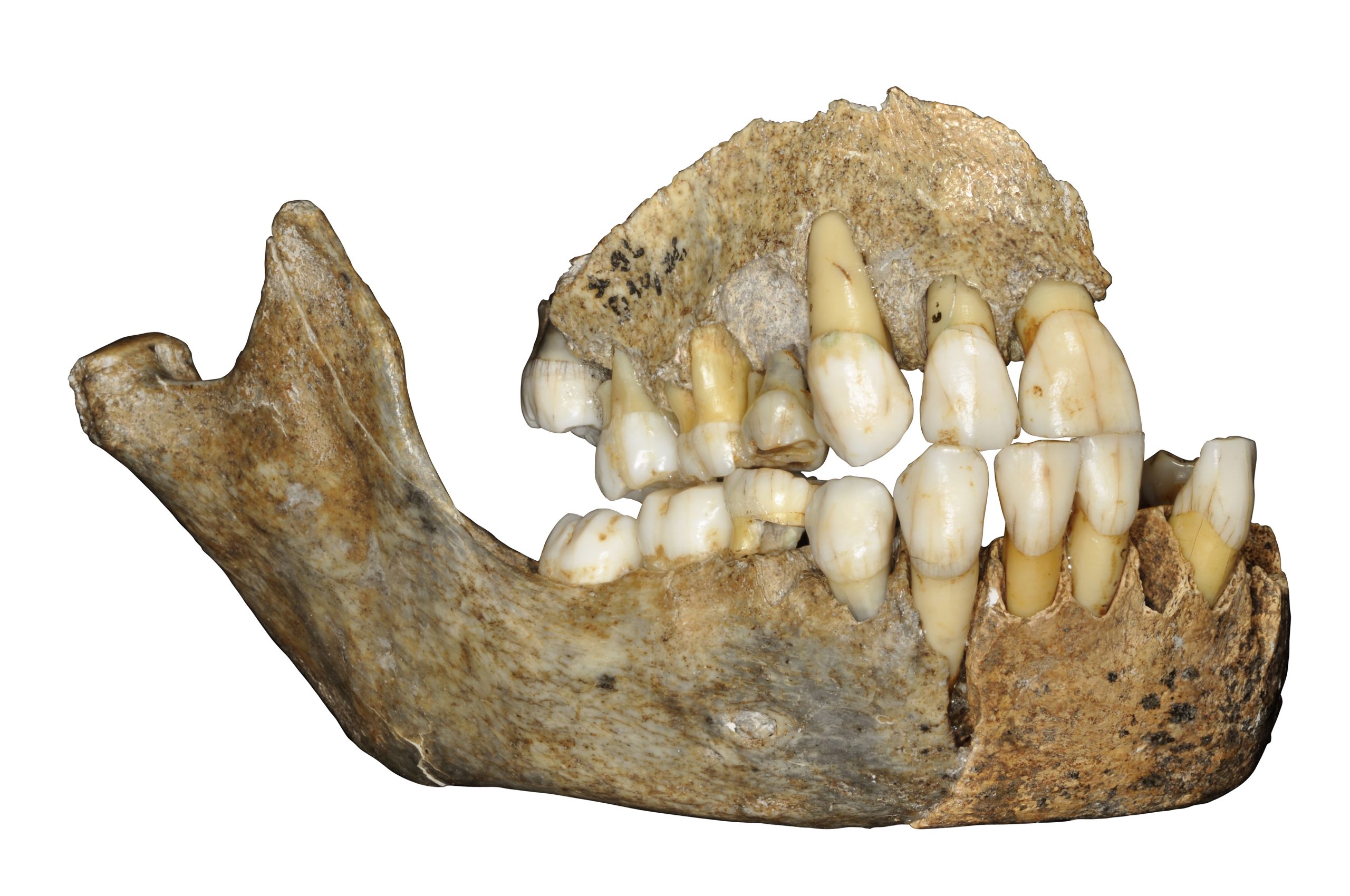DNA preserved in ancient bones and teeth has recently helped scientists reconstruct how groups of ancient humans migrated and mingled, and a new study now does the same thing for Neanderthals. Neanderthals lived in Eurasia for around 400,000 years, and it would be a huge stretch to assume they spent all that time as one big homogeneous population or that different groups of Neanderthals never migrated and mixed.
Thanks to ancient DNA, we can now begin to see how Neanderthal groups moved around Eurasia long before Homo sapiens entered the mix.
Neanderthals on the move
Evolutionary geneticist Stéphane Peyrégne and his colleagues recently sequenced DNA from two Neanderthals, both just over 120,000 years old. One set of DNA comes from the upper jaw of a Neanderthal woman from Scladina Cave in Belgium (we’ll call her Scladina), and the other comes from the thighbone of a Neanderthal man from Hohlenstein-Stadel Cave in Germany (HST for short). Both are around the same age as the Altai Neanderthal, a fossil from the famous Denisova Cave in Siberia.
It’s not at all surprising that Scladina and HST are more closely related to each other than to Altai, who lived roughly 5,000km (3,100 miles) away. They belonged to two distinct groups of Neanderthals that last shared a common ancestor sometime between 130,000 and 145,000 years ago.
It's also not very surprising that Scladina and HST have a lot of alleles in common with a Neanderthal who lived at Vindija Cave in Croatia 50,000 years ago. That suggests that Neanderthals in Central and Western Europe maintained stable, continuous populations for tens of thousands of years. The story in Siberia, on the other hand, looks a little different.
It turns out that the daughter of a Neanderthal and a Denisovan—she lived in Denisova Cave around 90,000 years ago—was much more closely related (on her Neanderthal mom’s side) to the three Neanderthals from Europe than to the Altai Neanderthal, who lived and died in the very same cave. That seems to suggest that at some point between 120,000 and 90,000 years ago, populations from Europe moved eastward into Siberia, and they may have at least partially replaced the group of Neanderthals already living there.
"Neanderthal migrants from the West arrived in the region of Denisova Cave between 120,000 and 90,000 years ago, but we do not know to what extent they replaced the earlier population," Peyrégne told Ars Technica.
Based solely on the DNA evidence we have now, it looks like a population of Neanderthals from Europe swept eastward and totally replaced Altai’s lineage, becoming the ancestors of all the Neanderthals that came later. Altai has no descendants among the Neanderthals whose DNA we’ve sequenced so far; they’re all more closely related to the European group, including Scladina and HST. But so far, we only have DNA from a handful of Neanderthals, which means it’s too soon to say exactly what happened or whether the Altai Neanderthal left behind descendants that we just haven't found yet. Our picture is incomplete, and we need more fossils and more sequenced DNA to fill in the gaps.
A complicated family history
Speaking of Neanderthal moms, ancient mitochondrial DNA—which mothers pass on directly to their offspring—tells an even more complicated story. Based on the number of mutations it has accumulated, HST’s mitochondrial DNA looks like it belongs to an older population, which last shared a common ancestor with other European Neanderthals around 270,000 years ago.
That's surprising, because according to his nuclear DNA, HST actually shared common ancestors with other European Neanderthals much more recently than that. Basically, he seemed to be carrying around a mitochondrial DNA remnant of a much, much older population. When [authors] ran some simulations, it turned out there wasn't much chance of that happening, unless we're very wrong about Neanderthal population sizes or unless something more complicated happened between 270,000 and 120,000 years ago.
"Given their estimated long-term small population size, Neanderthals are expected to descend from a few recent mitochondrial ancestors with little chance (less than five percent) to share such an old ancestor 270,000 years ago," Peyrégne told Ars Technica.
There are two possible explanations. One involves an isolated group of Neanderthals, cut off from others in Eurasia during an ice age around 190,000 to 130,000 years ago. Peyrégne and his colleagues suggest that this isolated group may have lived in the Middle East or Southern Europe, and when the ice receded, they were able to reconnect with the rest of the Neanderthal world. That would have re-introduced a much older line of mitochondrial DNA into the wider Neanderthal gene pool.
Another possibility is that a fresh wave of Neanderthals or relatives of modern humans migrated into Eurasia from Africa sometime after 270,000 years ago, carrying their mitochondrial DNA with them (never leave home without it!). They would have come from a larger population, with better odds of the older mitochondrial lineage surviving for so long. "In other words, the common ancestor dated to 270,000 years belonged to a population in Africa, and the mitochondrial lineages seen in Neanderthals were introduced in their population later than this common ancestor," explained Peyrégne.
Other researchers have proposed a similar event to explain why Neanderthals and modern humans share a mitochondrial common ancestor from around 400,000 years ago, when nuclear DNA suggests that our branch of the family tree split from Neanderthals around 600,000 years ago.
To help figure out HST’s family story—and the wider story of Neanderthals in Eurasia—Peyrégne and his colleagues hope to find and sequence DNA from older Neanderthal remains from Europe and the Near East.
Science Advances, 2019. DOI: 10.1126/sciadv.eeaw5873 (About DOIs)


